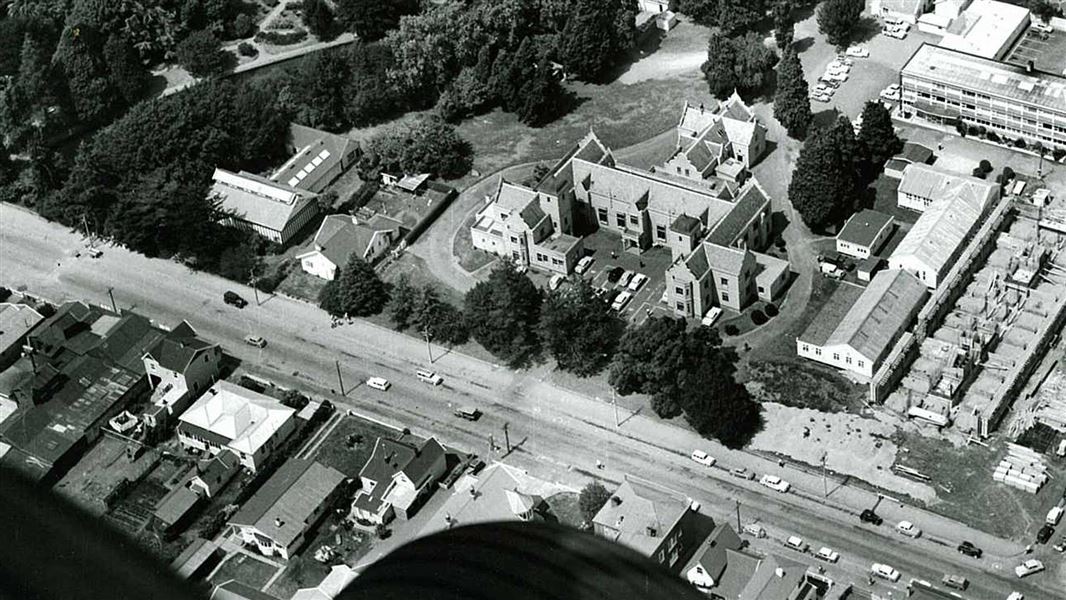Albion Square was the site of provincial government for the Nelson region from the late 1850s to the 1870s. All the civic matters that central government now look after, were decided on this site.
Today it's an historic reserve - protected for the significant number of historic remnants it contains. The fire engine house, trout hatchery and a survey chain test marker are protected as Category 1 historic places for their outstanding historical significance.
The fire engine house (1866) was built to mirror the design of the nearby grand provincial buildings. It's the only remaining reminder of these buildings, which were later demolished. For a short time it was used to house a fire engine specifically purchased to protect the provincial building from fire. It's now mainly remembered for serving as a morgue at the time of the Maungatapu Murders trial, where the victims of the notorious gang of bush rangers were laid out.
The trout hatchery (1867) ranks internationally as an early example of fish acclimatisation to establish populations of exotic plants and animals. It's one of the few remaining structures like this left in the world.
Acclimitisation of plants and animals from Britain and Europe to New Zealand was prominent in the efforts of provincial governments. The building was used to hatch thousands of trout ova from Australia, and in turn these young fish were used to populate streams and rivers around the province.
The interestingly shaped hexagonal building was built to the specifications of Frank Buckland, an internationally recognised artificial fish hatching expert from England.
A chain test marker on the site is now a very rare remnant of the work of early surveyors carving up land to be sold to European settlers. These markers consisted of a series of small bronze tabs set along a concrete strip. They defined the standard length of survey chain (literary a long length of chain) used to measure distance. The chain was important to the drive for accuracy and standardisation in surveying around New Zealand.
The small brick magazine (ca. 1861) that still stands on the site is likely to have been used by local militia to store munitions.
Surrounding the provincial buildings gardens were planted including an outstanding example of cork oak (Quercus suber), English yew (Taxus baccata), Bhutan Pine (Pinus wallichiana) and a row of giant sequoia (Sequoiadendron giganteum). Like the introduction of trout via the hatchery, it is likely that these trees were planted as part of the local desire to introduce exotic species to New Zealand, to test their potential commercial and recreational utility.
There are a number of workshop and outbuildings on the reserve dating from the 1930s built by the Public Works Department.
Associated with Albion Square are a few other remnants of Nelson's provincial past: the former Girls' School (1860), a caretaker's house (ca. 1860) and a pillar box (1862) said to the oldest post box still in use in New Zealand. Adjacent to the reserve is the Queens Gardens (1891) designed to celebrate the jubilee of the reign of Queen Victoria.
The impressive Jacobian-style Nelson Provincial Buildings, built in 1859 and once most impressive feature of Albion Square, no longer exists. They were demolished in 1969 to make way for a new court house.
The demolition of these buildings is still viewed as a major loss in the preservation of heritage. At the time it was one of the first nationally publically fought campaigns focussed on conserving built heritage. The demolition of the buildings was so keenly felt that the local heritage society chose a drawing of the buildings as its logo.
Getting there
Albion Square is on Bridge Street in central Nelson.
Related links
Find further information on the Heritage New Zealand website:
